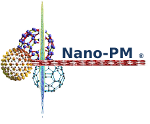Angela Hight Walker
Senior Scientist
NIST
 Dr. Hight Walker's research focuses on understanding the underlying chemistry and physics of nanomaterials, including noble and transition metallic nanoparticles, carbon nanotubes, and graphene. While the tool of choice is Raman spectroscopy, they use a suite of measurement methods to characterize the physicochemical properties of nanomaterials that enable key applications, such as medicine and energy, as well as predict their impact on the Environmental Health and Safety (EHS).
Dr. Hight Walker's research focuses on understanding the underlying chemistry and physics of nanomaterials, including noble and transition metallic nanoparticles, carbon nanotubes, and graphene. While the tool of choice is Raman spectroscopy, they use a suite of measurement methods to characterize the physicochemical properties of nanomaterials that enable key applications, such as medicine and energy, as well as predict their impact on the Environmental Health and Safety (EHS).
The Raman facility is unique. Multiple laser lines, two spectrometers including a triple grating, cryostats, magnetic field, and an atomic force microscope combined instrument, provide the basis for the measurement capabilities. Through our extensive in-house engineering and synthesis capabilities, we are able to uniquely synthesize the nanomaterials, fine tune their properties and isolate specific parameters for study. This cycle of production, isolation, and characterization is fundamental to a meaningful, detailed analysis.
Multidisciplinary collaborations, both those inside of NIST and beyond, are crucial to the group's success. By working in research teams, we learn more and contribute more fully to the physics of nanotechnology. NIST teams with which her group actively collaborates include Carbon Nanotube Metrology, Biomagnetic Imaging, Graphene, and Nano EHS.
Dr. Hight Walker is actively involved in standard activities regarding nanotechnology. Under ISO/TC 229, she chairs the US Technical Advisory Group for Working Group 2: Measurement and Characterization, as well as an international Joint Task Group titled Measurement and Characterization of Nanomaterials for Environment, Heath, and Safety. Angela also is a contributor to the characterization of the NIST carbon nanotube reference material.







































